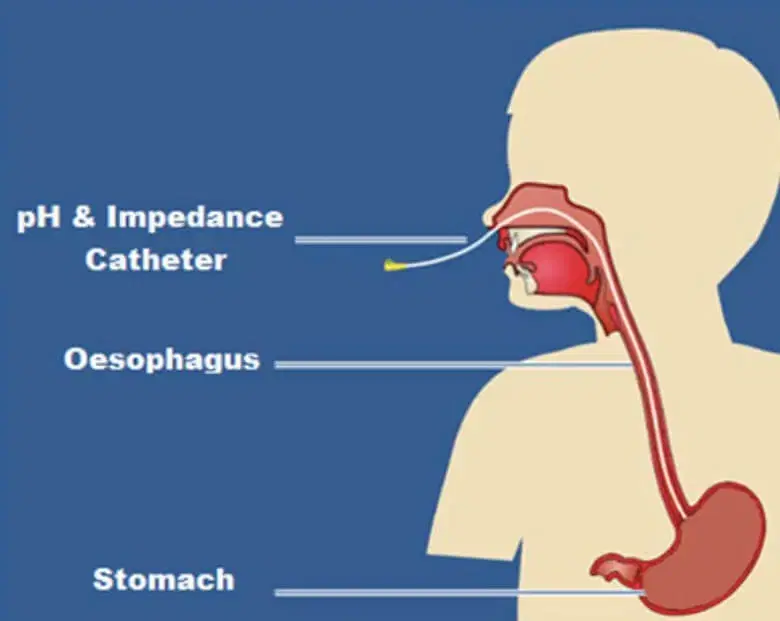
24-Hour pH Impedance Monitoring: Diagnosing Acid Reflux and GERD
Acid reflux is something most of us have experienced at least once — that uncomfortable burning sensation in the chest after a hearty meal or spicy food. However, when this discomfort becomes more frequent and severe, it could be a sign of a chronic condition called Gastroesophageal Reflux Disease (GERD). While occasional acid reflux is quite normal, GERD is a more serious, long-term condition that affects the quality of life for many. In India, GERD affects anywhere between 7.6% to 30% of the population, often causing persistent heartburn and regurgitation.
Why Advanced Diagnostics Matter
While common symptoms like heartburn and regurgitation can hint at GERD, traditional diagnostic methods, such as symptom-based assessments, may not provide the full picture. That’s where 24-hour pH impedance monitoring comes into play. It is an advanced tool used to diagnose both acidic and non-acidic reflux, helping doctors determine the exact nature of the problem. Accurate diagnosis is key in managing reflux-related conditions effectively.
What is 24-Hour pH Impedance Monitoring?
This procedure measures both acidic and non-acidic reflux over a 24-hour period, giving doctors detailed insights into the reflux events and how they correlate with your symptoms.
Why is it done?
The test helps differentiate between acidic and non-acidic reflux and allows a personalized approach to treatment. In India, where dietary habits are varied and spices are often a part of daily meals, this kind of differentiation is important for tailoring treatment options.
The Procedure: What to Expect
- Pre-Procedure Preparation
Before the test, you’ll be asked to fast and may need to stop certain medications that could interfere with the results. A thin catheter with sensors is gently inserted through the nose into the esophagus. Don’t worry; while it may sound uncomfortable, most patients tolerate it well. - During the Test
For the next 24 hours, the sensors will continuously measure the pH levels and impedance, recording both acid and non-acid reflux events. You’ll be asked to log your symptoms, meal times, and sleep patterns to help doctors correlate the data with real-life triggers. - Post-Procedure Recovery and Results
During the test, you can go about your daily activities, though eating and sleeping may feel slightly different. After 24 hours, the catheter is removed, and your doctor will analyze the data to diagnose the type and severity of reflux.
How 24-Hour pH Impedance Monitoring Helps in Diagnosing GERD and Acid Reflux
Detecting Both Acidic and Non-Acidic Reflux
Unlike traditional pH monitoring, which only detects acidic reflux, 24-hour pH impedance monitoring is a more comprehensive tool. This becomes particularly useful for those who may not respond well to acid-suppressing medications, as it can identify non-acidic reflux that might be contributing to symptoms.
Indian Insights: Research Highlights
Recent studies in India have shown that many patients with GERD suffer from non-erosive reflux disease (NERD), a condition where acid reflux occurs without visible damage to the esophagus. The research classifies NERD into three types:
- True NERD (66%),
- Reflux Hypersensitivity (22.7%)
- Functional Heartburn (11.3%)
Using 24-hour pH impedance monitoring, doctors can accurately classify the type of reflux, which allows them to tailor treatment options more effectively. For example, in one Indian study, personalized treatment based on reflux type improved symptoms in 94.3% of patients.
Read more about:- Oesophageal Manometry: Measuring the Function of Your Esophagus
Clinical Relevance of 24-Hour pH Impedance Monitoring
Helping Doctors Make Informed Treatment Decisions
The detailed data from this test helps doctors make informed decisions regarding the best course of treatment. For instance, if acid reflux is diagnosed, medications like proton pump inhibitors (PPIs) may be prescribed. However, if non-acidic reflux is found, other treatments might be more effective.
Early Detection of Complications
Early diagnosis can prevent severe complications of GERD, such as esophagitis (inflammation of the esophagus) or Barrett’s esophagus, a condition where the esophagus is damaged by prolonged acid exposure, increasing the risk of cancer. Some measurements, like proximal mean nocturnal baseline impedance (MNBI), are particularly useful in detecting GERD-related cough, a common issue for many patients in India.
Who Should Undergo 24-Hour pH Impedance Monitoring?
Ideal Candidates
If you have persistent symptoms of acid reflux or GERD that don’t respond to medications, or if you experience chronic heartburn, regurgitation, or GERD-associated cough, this test could be particularly useful. Many Indian patients with non-acid reflux, common in our country, benefit greatly from this advanced diagnostic tool.
Conclusion: The Future of Reflux Diagnosis in India
As the understanding of acid reflux and GERD advances, so too does the importance of using precise and non-invasive tools for diagnosis. 24-hour pH impedance monitoring plays a crucial role in diagnosing reflux-related conditions, offering a personalized treatment approach and improving the quality of life for many Indian patients. While we’re not promoting any specific hospital, gastroenterology centres equipped with advanced diagnostic tools like this can offer better solutions for those suffering from reflux and GERD.
In India, where GERD prevalence is high, early diagnosis can make all the difference.
